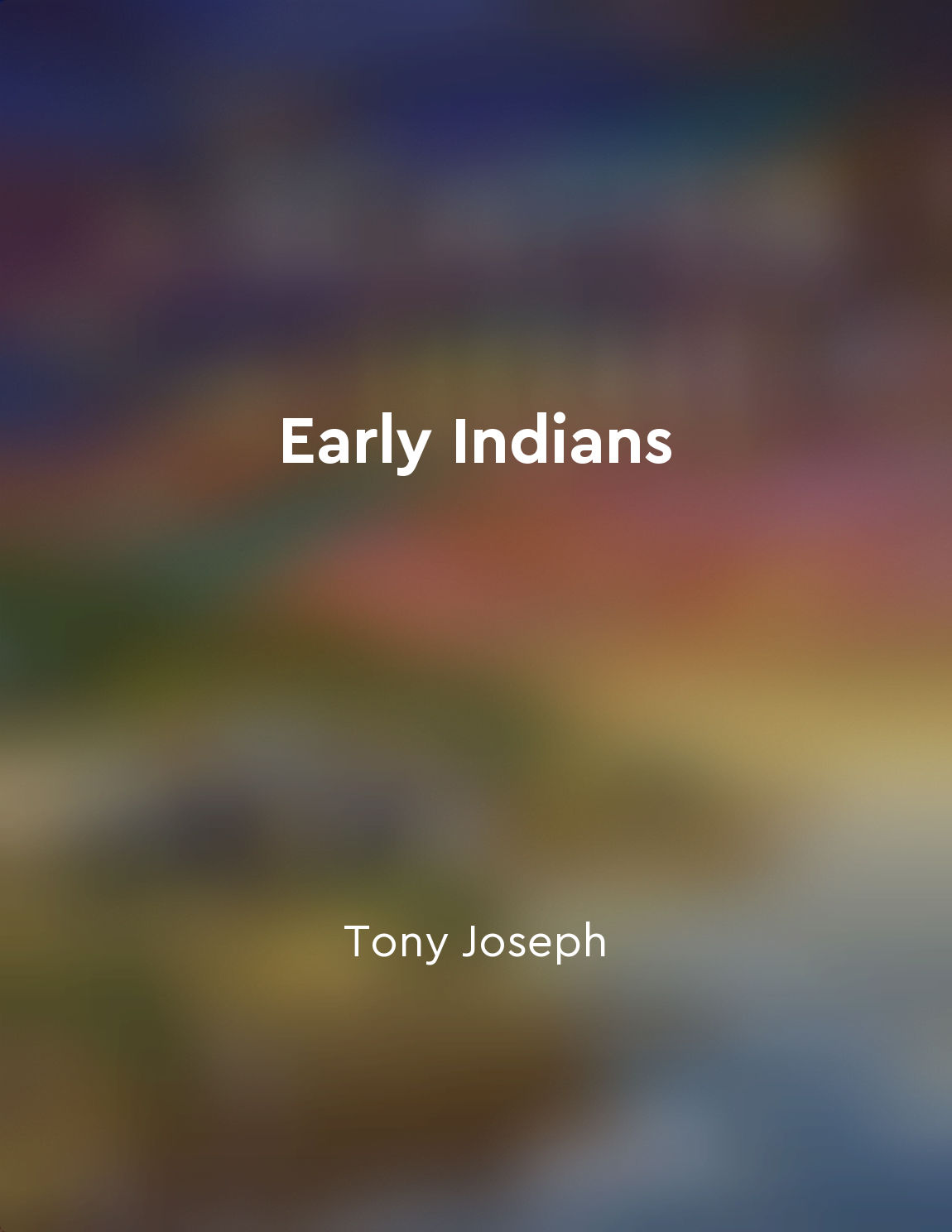Aryan migration greatly influenced the Vedic Period from "summary" of The Ancient History of India, Vedic Period by K. C. Singhal,Roshan Gupta
The Vedic Period in ancient India was a time of significant cultural and societal development. One of the key factors that greatly impacted this period was the migration of the Aryans into the Indian subcontinent. The Aryans were a nomadic, pastoral people who migrated from Central Asia into India around 1500 BCE. This migration brought about significant changes in the region, influencing various aspects of Vedic society. The arrival of the Aryans introduced new languages, beliefs, and practices to the indigenous people of India. The Aryans spoke an early form of Sanskrit, which became the language of the Vedas, the sacred texts of Hinduism. This linguistic influence can be seen in the Sanskrit names of various deities and rituals mentioned in the Vedas. Furthermore, the Aryans brought with them a new religion that centered around the worship of nature gods such as Indra, Agni, and Surya. This religious shift had a profound impact on the spiritual beliefs of the indigenous people of India, leading to the eventual development of Hinduism as a major religion in the region. The social structure of Vedic society was also significantly influenced by the Aryan migration. The Aryans were organized into tribes or clans, with each clan ruled by a chief or king. This hierarchical system of governance was adopted by the indigenous population, leading to the emergence of a more structured and centralized society. Additionally, the Aryans introduced new technologies and agricultural practices to India, such as the use of iron tools and the domestication of horses. These advancements helped to boost agricultural productivity and improve the overall quality of life for the people living in the region.- The Aryan migration greatly influenced the Vedic Period in ancient India, shaping the language, religion, social structure, and technological advancements of the time. This period of cultural exchange and integration laid the foundation for the development of Indian civilization as we know it today.
Similar Posts
Love unconditionally without expectations
The concept of loving unconditionally without expectations is a profound principle that guides us in our interactions with othe...
Social inequalities lead to societal unrest
Social inequalities are a common feature of human societies throughout history. In every society, some individuals or groups ha...
Understanding cultural and religious diversity is crucial
In today's globalized world, where interactions between people from different cultures and religions are becoming increasingly ...

Indian history shaped by multiple migrations
The history of India has been significantly influenced by multiple migrations that have occurred over thousands of years. These...

Indian history shaped by multiple migrations
The history of India has been significantly influenced by multiple migrations that have occurred over thousands of years. These...
The concept of unity in diversity within Hinduism
Hinduism is a religion that encompasses a vast array of beliefs, practices, and traditions. One of the central ideas within Hin...
Gandhi's nonviolent resistance inspired a nation
Gandhi's nonviolent resistance was a powerful tool that he used to challenge British rule in India. This form of protest, known...
Reincarnation is a fundamental belief in Hinduism
The concept of reincarnation holds a significant place in the religious framework of Hinduism. It is not merely a peripheral be...

